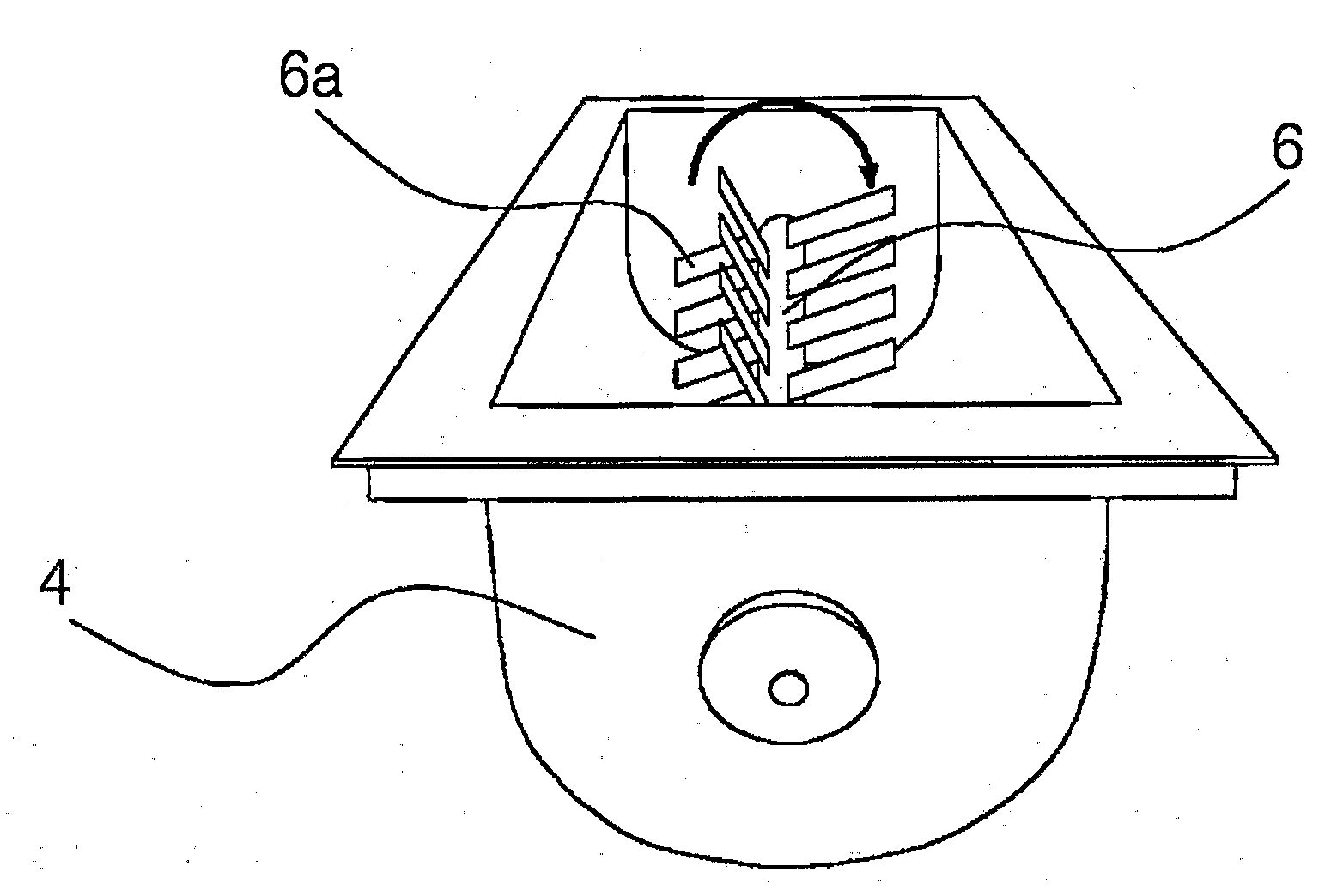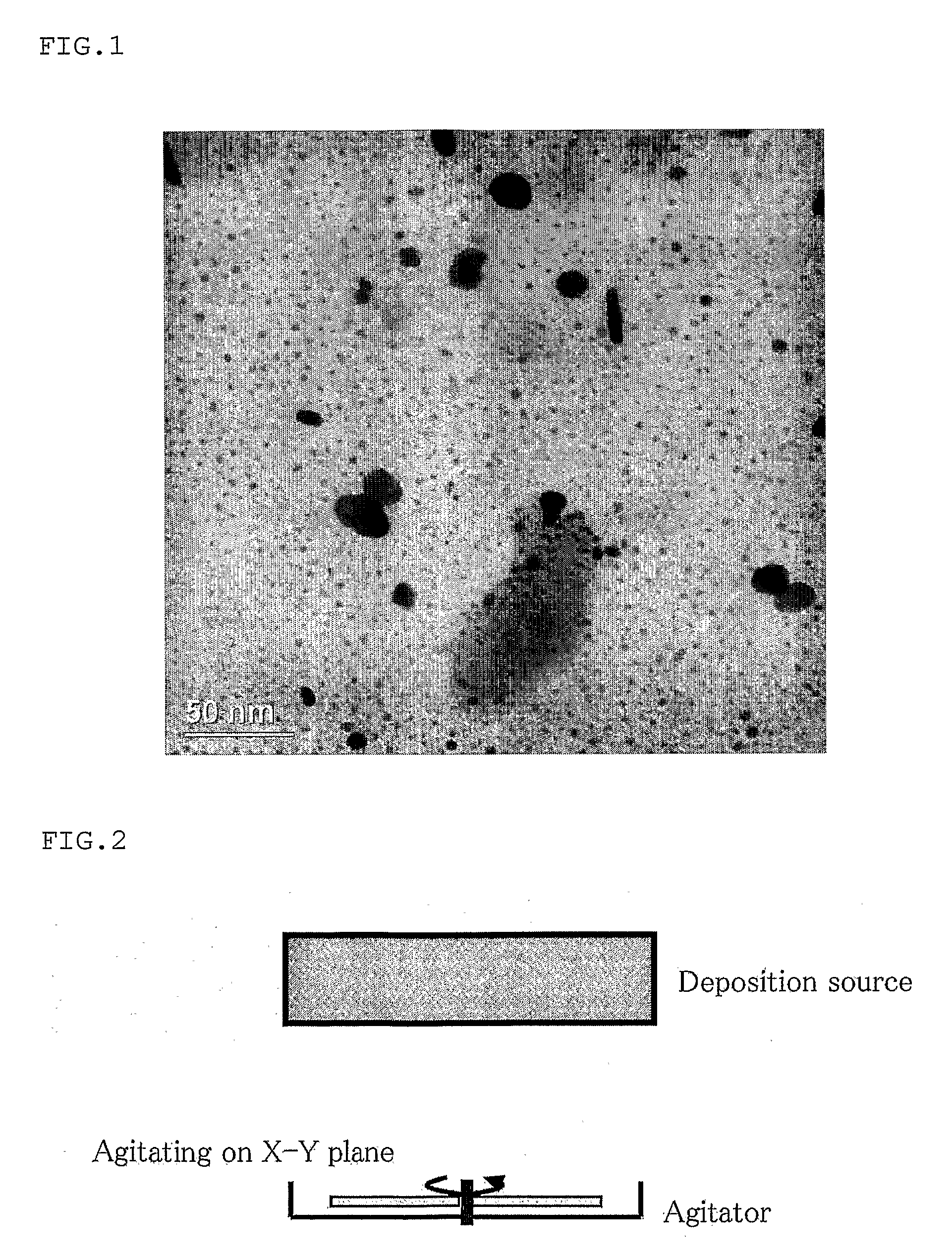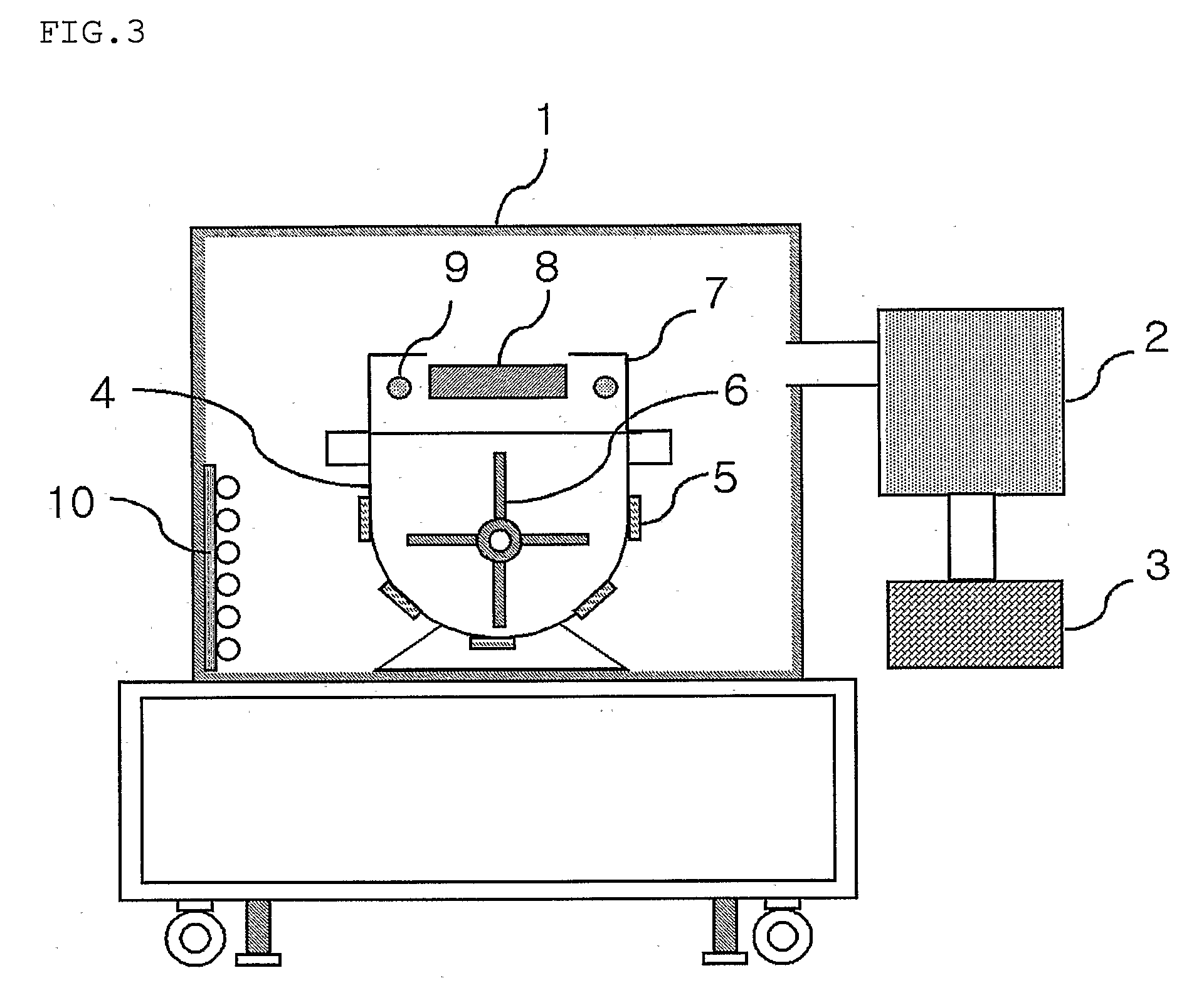Method And Device For Preparing Powder On Which Nano Metal, Alloy, And Ceramic Particles Are Uniformly Vacuum-Deposited
a technology of nano metals and ceramic particles, applied in the field of powder preparation, can solve the problems of several work processes or limit materials used in the preparation of nano particles, non-uniform size, and conventional nano-particle preparation methods, and achieve the effects of maximizing the nano effect, high purity, and excellent size uniformity
- Summary
- Abstract
- Description
- Claims
- Application Information
AI Technical Summary
Benefits of technology
Problems solved by technology
Method used
Image
Examples
first embodiment
Nano Silver Deposition on Salt and Sugar
[0038]About 25 kg of dried salt or sugar was put in the barrel 4 of FIG. 3, and a silver target was mounted on a DC magnetron sputter. After the powder was loaded in the vacuum chamber 1, a vacuum state was formed using the vacuum pump. A degree of vacuum is provided by only the low vacuum pump 3 or in combination with the high vacuum pump 2, depending on a work condition. An initial vacuum is kept in about 10−1 to 10−6 torr. Sputtering gas employs argon (Ar) gas. An injection amount of argon gas can vary depending on the work condition. In general, injection is performed to keep a vacuum of about 10−1 to 10−4 torr. After pumping to a desired vacuum degree and sputtering gas injection, silver target sputtering is performed, rotating the impeller 6 within the barrel 4. A rotation speed of the impeller 6 is controllable, and a sputtering speed is controllable depending on applied power and is generally within and out of a range of 1 W / cm2 to 200...
second embodiment
Nano Silver Deposition on Activated Charcoal
[0040]About 20 kg of activated charcoal was provided in a barrel within a vacuum chamber, and silver nano particles were deposited on the activated charcoal using the same device and work condition as those of the first embodiment. If materials having a difficulty in obtaining the desired vacuum degree, a porous material such as the activated charcoal, perform the vacuum pumping, being heated by a heater installed over the barrel, they can easily perform the vacuum pumping within a little more fast time. Silver contents of the activated charcoal are controllable by varying a work condition such as a sputtering power, a sputtering time, an impeller rotation speed, and a vacuum degree, and are controllable within a range of 10 ppm to 1000 ppm. This can be used for an anti-bacteria and sterilization filter for a water purifier.
third embodiment
Nano Silver Deposition on Sand
[0041]About 20 kg of sands were provided in a barrel 4 within a vacuum chamber 1, and nano silver particles were deposited on the sands using the same device and work condition as those of the first embodiment. In many cases, the sands generally contain much moisture. Thus, it is good to remove moisture from the sands using a dry process before providing the sands in the barrel 4 within the vacuum chamber 1. Moisture remaining even after the dry process is removed using a heater installed over the barrel 4, and a cold trap 10 within the vacuum chamber 1. The cold trap 10 can trap the moisture within the vacuum chamber 1 using a cold refrigerant and thus, can perform the vacuum pumping with a little more quickness. The silver contents of the sands are controllable by varying a work condition such as a sputtering power, a sputtering time, an impeller rotation speed, and a vacuum degree, and are controllable within a range of 10 ppm to 1000 ppm. This can b...
PUM
| Property | Measurement | Unit |
|---|---|---|
| diameter | aaaaa | aaaaa |
| particle size | aaaaa | aaaaa |
| particle size | aaaaa | aaaaa |
Abstract
Description
Claims
Application Information
 Login to View More
Login to View More - R&D
- Intellectual Property
- Life Sciences
- Materials
- Tech Scout
- Unparalleled Data Quality
- Higher Quality Content
- 60% Fewer Hallucinations
Browse by: Latest US Patents, China's latest patents, Technical Efficacy Thesaurus, Application Domain, Technology Topic, Popular Technical Reports.
© 2025 PatSnap. All rights reserved.Legal|Privacy policy|Modern Slavery Act Transparency Statement|Sitemap|About US| Contact US: help@patsnap.com



